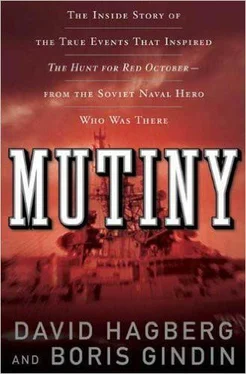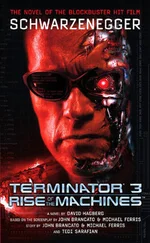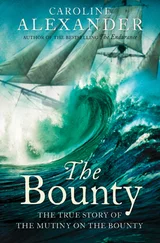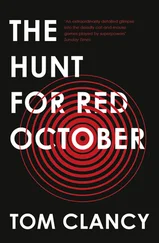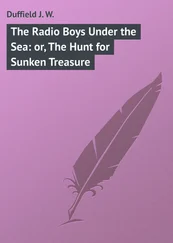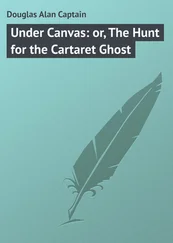8. THE STOROZHEVOY IN CUBA
NATO war planners describe the Storozhevoy as a Krivak-class frigate, which means his size is somewhere between two thousand and six thousand tons, and his main job should be as an offensive surface warship. But the Russians designed the Krivaks as defensive ASW ships. That’s a big difference in how each side sees the class. In the West the ships were viewed as just another example of the Soviet Union’s aggressive military posture, while Gindin and his fellow officers thought of their ship as a last-ditch stand against Allied submarines.
The Storozhevoy is 405 feet long on deck, carries two hundred men and officers, and can cruise forty-five hundred nautical miles at 20 knots or, if he’s in a hurry, less than seven hundred nautical miles at 32 knots. He was built in 1972-74 in the Yantar Zavod 820 shipyard in Kaliningrad and was outfitted with an impressive number of weapons systems. In addition to quadruple torpedo tubes amidships port and starboard, his most effective ASW platform is a four-tube launcher for the SS-N-14, which is backed up by missile launchers for the radar-guided SA-N-4 SAMs, plus a variety of 30mm Gatling and three-inch guns, the usual complements of mines, and a pair of twelve-barrel RBU-6000 ASW mortars forward of the bridge. This last weapons system is deadly effective out to 3.3 nautical miles and is automatically loaded. As fast as the weapons officer, who happens to be Senior Lieutenant Bogomolov, pushes the button, the RBUs will fire until they run out of missiles.
The ships are equipped with state-of-the-art electronics including the Head Net C search radar, a pair of Eye Bowl radar systems to control the SS-N-14 missiles, Pop Group radars for the SA-N-4 missiles, plus Owl Screech radar for the guns, Don Kay, Palm Frond Surface Search Radars, and the usual array of VHF and IFF radio communications systems, and a complete suite of ESMs equipment to detect any sort of electronic noise from a submarine or any other ship.
In Gindin’s mind, and in the minds of Captain Potulniy and most of the other officers, the Storozhevoy epitomizes what a modern navy warship should be. He and his brother Krivaks are the largest ASW ships in the Baltic and provide the last line of defense against any NATO submarine attack on the Rodina.
There may have been better captains in the Soviet navy, but none could have been so proud of his position as was Potulniy. He was assigned to take command while the ship was still under construction in 1973, so he could help supervise the building. He’d been executive officer on the Bditelny, the first of the Krivaks, so he knew how the ship was supposed to be put together. He was only thirty-seven at the time, and although he called all of his officers by their first names, he was generally more preoccupied with the needs of his ship than the needs of his men. He practically lived on the bridge, and while at sea he was always on duty, day and night, leaving the care of his crew to his zampolit, Captain Third Rank Sablin. It was an arrangement that both men felt comfortable with but one that Potulniy would regret for the rest of his life.
The two men couldn’t have been more different. Although they both graduated from the prestigious Frunze Military Academy, which put them on a fast track to command positions, Sablin opted to become a political officer. That in some ways is professional suicide, because zampolits never become ship captains and therefore promotions are few and far between. Also, political officers are generally not liked very much by the officers or the crew. They’re the ones whose job it is not only to force-feed the standard Marxist-Leninist doctrine down everybody’s throats but also to sugarcoat the latest Party orders no matter how stupid they are. The captain is the absolute ruler aboard his ship, while the political officer is the Party hack. Every sailor must attend political classes every two weeks. Normally the zampolit supplies the lesson materials and the officers teach the sailors in their sections.
On the one hand the captain should be close to his crew, know their names and backgrounds, know who can be trusted to come through in a tight situation and who will probably fold. After all, the safety of the ship depends on his men. On the other hand, the zampolit is just the guy who dishes out the propaganda that no one ever wants to hear.
But the situation on the Storozhevoy, this crisp November day in Riga, is different. Potulniy really does seem to care more about his ship than he does about his officers and men. He is an aloof man who goes strictly by the book. He is young, and he has a lot to prove. Being the captain of an ASW ship is just the start; it’s a stepping-stone to much bigger and better things. But Sablin is everybody’s friend—officer, midshipman, and ordinary sailor alike. He takes time to talk to the men, find out about their towns and their families, about their fears and ambitions. He’s not afraid to talk about a sailor’s dreams and what they might mean or help a sailor figure out his love life, or lack of love life. Sablin is there to be a friend and to act as the father figure, a role that the captain should be playing. But the zampolit is kind to the other officers as well, offering to take over their political classes when they are too tired or bored. And he’s always cheerful, always ready with a pat on the back, ready to lend a hand, and always genuinely interested in what a man’s job is and how he does it.
Like this morning at breakfast.
Gindin has some vague premonitions this morning, but he does not connect them to the captain or to Sablin or to the marked differences between the two officers. He just has this unsettling feeling of unrest, and he thinks that most everyone else aboard feels the same way to one degree or another. But he can’t put his finger on it.
When he tried to talk to Potulniy about his fears a couple hours ago, the captain dismissed him out of hand.
“Stick to your duties, Boris,” the captain said. “Do your job correctly, supervise your crew, make sure that they’re physically and mentally fit, and everything else will take care of itself.”
It’s as if the captain is so distant from his crew that he doesn’t know what’s really going on aboard his own ship. But that’s not true, either.
They were on their way down to Cuba, and Gindin, like every other officer aboard, did normal duty rotations, which were four hours on, four hours on standby, and four hours off. The rotations were changed each month, so you didn’t always get the same shifts.
On this night, Gindin had the midnight to 4:00 A.M. rotation with two gas turbine specialists, two motor/diesel men, one steam/fuel sailor, and one electrician. These were all young kids, and with nothing much happening on the graveyard shift and their last meal at nine in the evening, they would get hungry. And as stomachs growl, ingenuity increases.
Gindin’s crew wants to know if he’d like something to eat. Of course he says yes, and he’s led aft to the machinery room, where two of the gas turbine engines are turning over. Somehow the men have gotten some potatoes from the galley, some oil, and a frying pan. Each turbine develops a hot spot on its upper casing and they are using one of them to fry up the potatoes. Gindin knows he’s supposed to put a stop to this business, and his sailors know it, too. They’re all standing there, looking at him expectantly, waiting for the shoe to drop, but the smell of the frying potatoes is almost too much to bear.
Anyway, Gindin is not much older than his men, it’s the middle of the night, there is no safety issue to worry about, the engines are running normally and he’s hungry, too. So he says, “Sure,” and the meal is nothing short of fantastic, almost as good as the kinds of snacks he’d had with his dad, picking mushrooms in the woods.
Читать дальше
